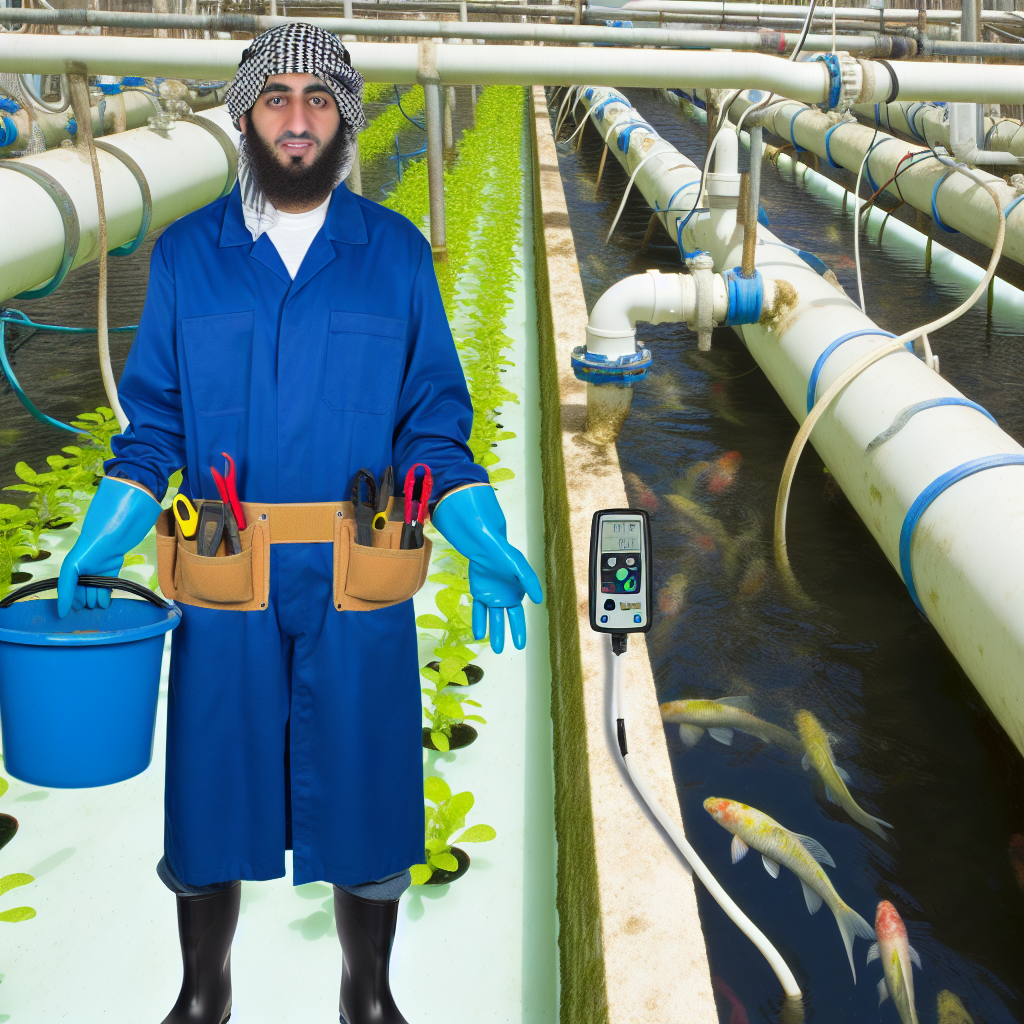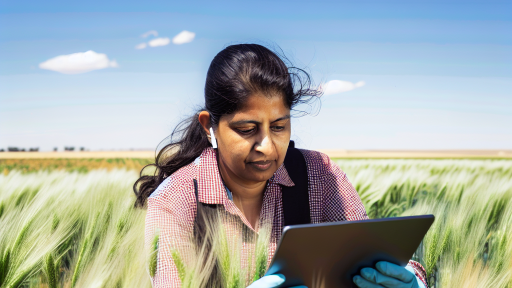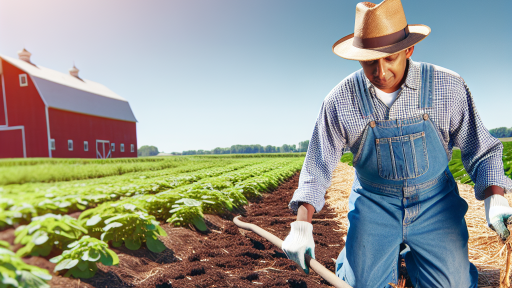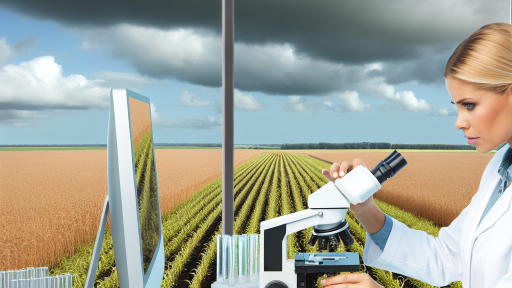Introduction to Aquaponics and Importance of Water Management
Aquaponics combines aquaculture and hydroponics for sustainable farming.
This method creates a synergetic environment for both fish and plants.
Water management plays a crucial role in aquaponics systems.
Effective management ensures healthy fish and robust plant growth.
Understanding Aquaponics
Aquaponics utilizes fish waste as a nutrient source for plants.
In return, plants filter and purify the water for the fish.
This natural cycle minimizes water usage compared to traditional farming.
Engaging in aquaponics promotes environmental sustainability.
Water Quality and Its Impact
Water quality is vital for the well-being of both fish and plants.
Parameters such as pH, ammonia, and nitrate levels must be monitored.
Healthy water conditions foster fish growth and plant vitality.
Regular water testing helps identify and resolve potential issues.
Techniques for Effective Water Management
Implementing efficient filtration systems can enhance water clarity.
Biofilters convert harmful ammonia into less toxic compounds.
Consider using a recirculating pump to keep water circulating.
Transform Your Agribusiness
Unlock your farm's potential with expert advice tailored to your needs. Get actionable steps that drive real results.
Get StartedThis ensures even distribution of nutrients and oxygen.
Maintaining Balanced Water Levels
Consistent water levels prevent stress for aquatic life.
Evaporation and plant uptake can reduce water levels quickly.
Adding a top-off system can help manage water loss effectively.
Regular monitoring allows for timely adjustments to water levels.
Utilizing Technology for Monitoring
Employing technology can streamline your water management efforts.
Automated monitoring systems can track key parameters continuously.
Smart sensors can alert you to any drastic changes in water quality.
This proactive approach minimizes risks and enhances system stability.
Understanding the Aquaponic Water Cycle
Key Components of the Aquaponic System
An aquaponic system combines aquaculture with hydroponics.
This integration creates a mutually beneficial environment.
Fish produce waste, which supplies nutrients for plants.
Meanwhile, plants help filter and clean the water for the fish.
Understanding this cycle is crucial for effective water management.
The Role of Fish in the Ecosystem
Fish are vital to the aquaponic process.
They contribute to nutrient production through their waste.
Common fish choices include tilapia, catfish, and trout.
The species chosen depends on the local climate and market demand.
Regular monitoring of fish health ensures a stable system.
Importance of Bacteria
Bacteria play a crucial role in aquaponics.
They convert fish waste into plant-available nutrients.
This process is known as nitrification.
Employing beneficial bacteria ensures a balanced ecosystem.
Start-up times for these bacteria can vary based on environmental conditions.
Showcase Your Farming Business
Publish your professional farming services profile on our blog for a one-time fee of $200 and reach a dedicated audience of farmers and agribusiness owners.
Publish Your ProfilePlant Contributions
Plants absorb the nutrients and purify the water.
Choosing the right plants can enhance nutrient uptake.
Typical plants include leafy greens, herbs, and fruiting plants.
Plant growth directly impacts the water quality in aquaponic systems.
Water Quality Management
Maintaining optimal water quality is essential.
This includes monitoring pH, ammonia, nitrite, and nitrate levels.
Regular testing helps prevent toxic buildup.
Consider using water testing kits for accurate measurements.
Water Circulation and Flow
Efficient water circulation ensures all components work together.
Pumps play a critical role in maintaining proper flow rates.
Adjust the pump size according to your system’s needs.
This promotes healthy fish and plant growth simultaneously.
Evaporation and Water Loss
Water evaporation is a natural process in aquaponics.
Implementing covers can reduce evaporation rates.
Monitor the water levels consistently to avoid major fluctuations.
Top off the system with fresh water regularly.
Recirculating Water for Efficiency
Recirculating water is beneficial to aquaponics.
This method maximizes resource use and minimizes waste.
It ensures all elements of the system are interconnected.
Consider using sump tanks to facilitate efficient water movement.
Seasonal Adjustments
Adjustments may be necessary with changing seasons.
Temperature and light can affect fish and plant health.
Consider indoor growing or supplemental lighting in winter.
This helps maintain a stable growing environment.
Optimal Water Quality Parameters for Fish and Plants
Importance of Water Quality
Water quality significantly affects the health of both fish and plants in an aquaponics system.
Healthy water conditions promote strong growth and reduce disease risks.
Maintaining optimal water parameters is crucial for system balance.
Key Water Quality Parameters
Several key factors define optimal water quality for aquaponics.
These factors include temperature, pH, ammonia, nitrites, and nitrates.
Each parameter plays a specific role in the overall ecosystem.
Temperature
Fish and plants thrive within specific temperature ranges.
Generally, most fish prefer temperatures between 22°C and 28°C.
Plants often grow best when temperatures are similar.
Regularly monitor the temperature to ensure it remains stable.
pH Level
The pH level indicates the acidity or alkalinity of the water.
Most aquaponic systems function best with a pH of 6.5 to 7.5.
Test the pH regularly and adjust as necessary.
Utilize pH control products for more accurate adjustments.
Ammonia and Nitrite Concentrations
Ammonia results from fish waste and food decomposition.
Ideally, ammonia levels should remain below 0.5 mg/L.
Showcase Your Farming Business
Publish your professional farming services profile on our blog for a one-time fee of $200 and reach a dedicated audience of farmers and agribusiness owners.
Publish Your ProfileSimilar attention is needed for nitrite levels, which shouldn’t exceed 0.2 mg/L.
Regularly check these concentrations to prevent toxicity.
Nitrate Levels
Nitrates are essential nutrients for plant growth.
These should generally range from 10 to 80 mg/L in aquaponics systems.
Regular monitoring can help maintain optimal nitrate levels.
Consider using additional filtration methods if levels become too high.
Monitoring and Maintenance Tips
Regular monitoring is vital for maintaining optimal water quality.
Use reliable test kits to check all water quality parameters weekly.
Keep detailed records of your findings for future reference.
Adjustments should be made promptly to prevent any health issues.
Creating a Balanced Environment
Incorporating these tips ensures a balanced aquaponics ecosystem.
Healthy water conditions lead to thriving fish and plants.
Continuous care and attention can yield outstanding agricultural results.
Delve into the Subject: Cover Crops: Enhancing Biodiversity on Your Farm
Methods for Monitoring Water Quality: Tools and Techniques
Understanding Water Quality Parameters
Water quality parameters significantly affect aquaponics systems.
Common parameters include pH, ammonia, nitrites, and nitrates.
Monitoring these parameters ensures healthy fish and plants.
Maintaining optimal levels promotes better growth and productivity.
Essential Tools for Monitoring
Utilizing appropriate tools simplifies water quality monitoring.
- pH meters measure acidity or alkalinity levels accurately.
- Test strips provide quick, color-coded readings for various parameters.
- Digital sensors offer real-time monitoring capabilities.
- Ammonia and nitrate test kits help track harmful compounds.
Techniques for Regular Testing
Establish a regular schedule for testing water quality.
Daily checks for pH and ammonia levels are advisable.
Weekly testing of nitrites and nitrates can be beneficial.
Employ a log to document findings and analyze trends.
Interpreting Test Results
Understanding test results is crucial for effective management.
Compare results against established guidelines for aquaponics.
Adjust water conditions based on parameter readings.
Consult aquaponics resources for specific corrective actions.
Recognizing Signs of Water Quality Issues
Be vigilant about signs of poor water quality.
Fish stress or unusual behavior often indicate problems.
Algae blooms may signal nutrient imbalances or excess light.
Address any issues promptly to maintain system health.
Implementing Water Quality Improvement Strategies
Consider adding beneficial bacteria to improve water conditions.
Regular water changes can help reset nutrient levels effectively.
Ensure filtration systems function optimally for consistent quality.
Evaluate and adjust feed quantities to reduce waste accumulation.
See Related Content: Advanced Tools For Pest And Disease Forecasting
Common Water Management Challenges in Aquaponics
Understanding pH Levels
Maintaining proper pH levels is crucial in aquaponics.
Both fish and plants thrive in specific pH ranges.
Inconsistent pH can stress fish and hinder plant growth.
Regular monitoring ensures stability in the ecosystem.
Showcase Your Farming Business
Publish your professional farming services profile on our blog for a one-time fee of $200 and reach a dedicated audience of farmers and agribusiness owners.
Publish Your ProfileManaging Water Temperature
Water temperature significantly affects fish metabolism.
Extreme temperatures can lead to fish diseases.
Plants also require specific temperature ranges for optimal growth.
Installing temperature control systems can mitigate this issue.
Addressing Water Clarity
Cleansing the water is essential for aquaponics success.
Cloudy water can indicate excess nutrients or bacterial blooms.
Regular filtration and water changes help maintain clarity.
Clear water supports better light penetration for plants.
Managing Ammonia and Nitrite Levels
High ammonia levels can be toxic to fish.
Nitrite spikes can disrupt the nitrogen cycle.
Beneficial bacteria play a key role in managing these levels.
Regular testing can help prevent toxic conditions.
Implementing Effective Filtration Systems
Filtration systems are crucial for clean water in aquaponics.
They remove waste and provide oxygen to the water.
Choosing the right filtration system enhances system efficiency.
Regular maintenance ensures optimal performance.
Maintaining Water Quality
Water quality directly influences plant and fish health.
Frequent testing helps catch issues early.
Consider adding water conditioners to neutralize harmful substances.
Regular water changes can rejuvenate the system.
Uncover the Details: Latest Advances In Crop Monitoring Technologies
Strategies for Effective Water Filtration and Treatment
Understanding Water Quality in Aquaponics
Water quality plays a crucial role in aquaponics systems.
It directly impacts plant growth and fish health.
Regular monitoring ensures that conditions remain optimal.
Implementing Filtration Techniques
Effective filtration is essential for clean water in aquaponics.
Mechanical filters remove solids and debris from water.
Biological filters convert harmful ammonia into less toxic nitrates.
Chemical filtration can address specific contaminants.
Choosing Appropriate Filtration Systems
Selecting the right system depends on system size and type.
Consider using a combination of filters for best results.
Examples include vortex filters and sand filters.
These systems enhance water clarity and quality.
Routine Maintenance of Filtration Systems
Regular maintenance keeps filtration systems running smoothly.
Check and clean filters to remove clogs and buildup.
Replace filter media as needed to ensure effectiveness.
Water Treatment Options
Water treatments can help achieve specific pH levels and reduce harmful pathogens.
Common methods include UV sterilization and ozone generation.
Both methods effectively kill bacteria and other pathogens.
Monitoring Parameters for Healthy Aquaponics
Keep track of essential water parameters like pH, ammonia, and nitrates.
Test kits are widely available for accurate monitoring.
Showcase Your Farming Business
Publish your professional farming services profile on our blog for a one-time fee of $200 and reach a dedicated audience of farmers and agribusiness owners.
Publish Your ProfileData logging can help identify trends and anomalies.
Adjusting Water Quality Measurements
Make necessary adjustments based on monitoring results.
Add buffers to stabilize pH levels when needed.
Adjust feeding rates to control ammonia levels effectively.
Utilizing Beneficial Microorganisms
Microorganisms play a vital role in nutrient cycling.
Introduce beneficial bacteria to enhance biological filtration.
These bacteria help convert fish waste into usable nutrients for plants.
Enhancing Water Flow and Circulation
Ensure water circulates adequately throughout the system.
Pumps must maintain the right flow rate for fish and plants.
Consider using aeration stones to promote oxygen transfer.
Developing an Efficient Water Management Plan
A comprehensive water management plan enhances system performance.
Document water quality data to inform decision making.
Regularly review and adjust management strategies for success.
Gain More Insights: Effective Storage Solutions for Fresh Produce

Water Conservation Techniques in Aquaponic Systems
Understanding Aquaponics
Aquaponics combines aquaculture and hydroponics into a sustainable system.
This method recycles water, benefiting both plants and fish.
Effective water management is crucial for system health.
Implementing Efficient Filtration Systems
High-quality filters reduce water loss due to evaporation.
Consider installing mechanical filters to capture solid waste.
Biological filters also help maintain water quality.
Utilizing Water-Saving Technologies
Drip irrigation systems save water and provide focused nutrient delivery.
These systems minimize water runoff and reduce evaporation rates.
Automated timers can optimize watering schedules effectively.
Monitoring Water Levels Regularly
Consistent monitoring helps maintain optimal water levels.
Use water level sensors to automate this process.
This prevents overflows and conserves water efficiently.
Implementing Rainwater Harvesting
Capture rainwater to supplement your aquaponics system.
This practice enhances water conservation and reduces costs.
Ensure collected water meets quality standards before use.
Maintaining System Health
Healthy plants and fish contribute to efficient water usage.
Regularly check for leaks to prevent unnecessary water loss.
Conduct pH tests to ensure balanced water quality.
Educating and Engaging Community
Sharing knowledge about conservation promotes sustainable practices.
Organize workshops to teach water management techniques.
Engagement fosters a supportive community focused on sustainability.
The Role of pH and Nutrient Levels in Water Management
Importance of pH Levels
Maintaining the right pH level is crucial for aquaponics systems.
The ideal pH range typically falls between 6.5 and 7.5.
Outside this range, plants and fish can suffer adverse effects.
Monitoring pH helps prevent nutrient lockout in plants.
Regular testing ensures that the environment remains optimal for growth.
Showcase Your Farming Business
Publish your professional farming services profile on our blog for a one-time fee of $200 and reach a dedicated audience of farmers and agribusiness owners.
Publish Your ProfileMethods for Monitoring pH Levels
Use pH test strips for simple and quick evaluations.
Consider digital pH meters for more precise readings.
Establish a routine for checking pH every few days.
Adjustments should be made gradually to avoid shocking the system.
Common pH adjustment methods include adding hydrochloric acid or sodium bicarbonate.
Nutrient Levels and Their Significance
Nutrient levels directly influence plant health and fish growth.
Essential nutrients include nitrogen, phosphorus, and potassium.
Balanced nutrient levels promote robust growth in both plants and fish.
Regular monitoring is critical to maintaining these levels within optimal ranges.
Testing and Adjusting Nutrient Levels
Various nutrient testing kits are available for aquaponics systems.
These kits help identify deficiencies or excesses in nutrients.
Based on results, adjustments can be made with organic fertilizers.
Adding supplements like liquid seaweed can enhance nutrient availability.
Impact of Water Quality on pH and Nutrients
Water quality significantly affects both pH and nutrient levels.
Chlorine and heavy metals must be removed for optimal results.
Using dechlorinated water ensures that beneficial microorganisms thrive.
Moreover, maintaining consistent water temperature also plays a role.
Temperature fluctuations can impact pH and nutrient solubility.
Integrating Water Changes
Regular water changes help manage both pH and nutrient levels effectively.
Water changes dilute unwanted toxins while replenishing nutrients.
Adjust the frequency based on the size and type of your system.
Remember to condition new water before adding it to prevent shock.
Best Practices for Seasonal Water Management Adjustments
Understanding Seasonal Changes
Climate affects water management in aquaponics systems.
During warmer months, evaporation rates increase significantly.
Conversely, cooler seasons often lead to reduced evaporation.
Understanding these changes helps in planning adjustments.
Water Quality Monitoring
Regularly monitor water parameters year-round.
Key parameters include pH, ammonia, nitrites, and nitrates.
Adjustments based on seasonal data improve system health.
Utilize testing kits or digital meters for accuracy.
Adjusting Water Levels
Maintain optimal water levels to ensure system balance.
In winter, lower temperatures can reduce water needs.
Reduce water levels slightly to prevent overflow risks.
In summer, ensure enough water to combat evaporation.
Temperature Management
Temperature directly influences fish and plant health.
Install heaters for chilly months to maintain warmth.
In warmer months, consider shading to avoid overheating.
Keep your water temperature stable for optimal growth.
Stocking Adjustments
Consider fish stocking density based on seasonal conditions.
Fish grow faster in warmer water; adjust feed accordingly.
Showcase Your Farming Business
Publish your professional farming services profile on our blog for a one-time fee of $200 and reach a dedicated audience of farmers and agribusiness owners.
Publish Your ProfileReduce feed during colder months as metabolism slows.
Monitor growth rates to ensure healthy fish populations.
Water Conservation Practices
Implement water-saving techniques year-round.
Use rainwater harvesting to supplement water supply.
Recycle water from filters effectively in your system.
Such practices enhance sustainability and reduce costs.
Scheduling Maintenance
Plan routine maintenance aligned with seasonal cycles.
Clean tanks and filters regularly to ensure efficiency.
Inspect all equipment for wear or damage periodically.
Address issues promptly to maintain system reliability.
Long-Term Water Management for Sustainable Aquaponics
Understanding Water Needs
Every aquaponics system has unique water requirements.
Understanding these needs is critical for healthy plants and fish.
Moreover, proper assessment helps maintain balance in the ecosystem.
Regular Monitoring Practices
Frequent testing of water quality is essential.
Check parameters like pH, ammonia, nitrite, and nitrate levels regularly.
This practice ensures the wellbeing of all system inhabitants.
Implementing Efficient Filtration
Proper filtration systems enhance water quality significantly.
Use mechanical and biological filtration to manage solid waste.
Additionally, well-maintained filters prevent issues with toxicity.
Utilizing Water Conservation Techniques
Adopt water-saving methods to reduce usage.
Capture rainwater or use gray water for irrigation.
These practices promote sustainability in aquaponics systems.
Conducting Regular System Maintenance
Routine checks on system components are vital.
Inspect pumps, tubing, and filtration systems for efficiency.
Address any leaks or issues promptly to avoid complications.
Balancing Plant and Fish Needs
Each species has specific water needs for optimal growth.
Ensure that both plants and fish receive adequate attention.
Adjust conditions based on the specific requirements of your crops and aquatic life.
Documenting Water Management Practices
Keep detailed records of water quality and changes.
This documentation helps identify trends or problems.
Analyzing historical data can inform future adjustments.
Educating Yourself on New Technologies
Stay informed about advancements in aquaponics technology.
Innovations can lead to improved water management techniques.
Attend workshops, seminars, or online courses to enhance your knowledge.
Engaging with the Aquaponics Community
Connect with other aquaponics enthusiasts and experts.
Join online forums, local groups, or social media communities.
Sharing experiences can lead to valuable insights.
Additional Resources
Exploring Water Solutions for a Better Future : USDA ARS
Center for Urban Agriculture & Gardening Education | College of …




